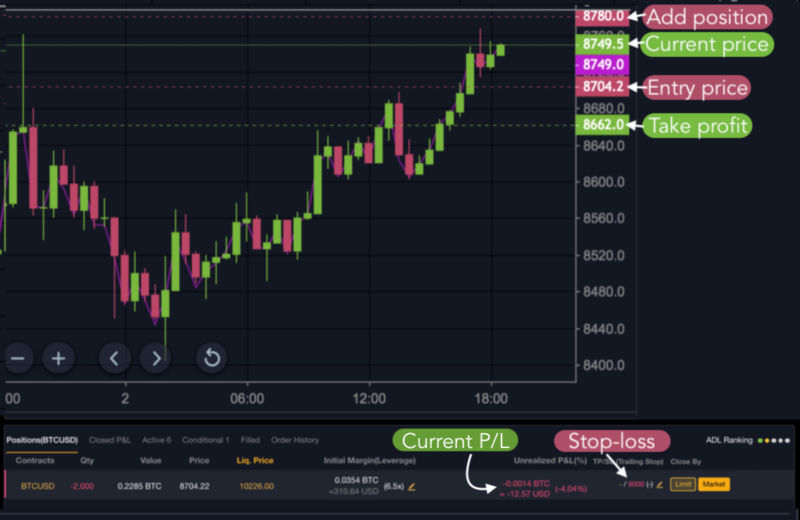Short selling Bitcoin is a financial strategy used by investors who anticipate that the price of Bitcoin will fall in the future. This approach allows traders to capitalize on market downturns, but it requires a solid grasp of market dynamics and a strategic approach to risk management.
Why is this Approach Efficient?

At its core, short selling involves borrowing an asset, such as Bitcoin, and selling it at the current market price. Later, if the market price falls, the investor buys back the same amount of the asset at the lower price, returns the borrowed amount, and pockets the difference as profit.
Steps to Short Bitcoin
- Open an account with a platform that allows for short selling.
- Deposit collateral as required by the platform.
- Borrow Bitcoin and sell it at the current market price.
- Wait for the price to drop and repurchase Bitcoin.
- Return the borrowed Bitcoin and keep the profit.
How to Prepare for Short Selling?
Before engaging in short selling, it’s essential to have:
- A well-researched trading plan.
- An understanding of market trends.
- Tools for technical analysis.
- A risk management strategy, including stop-loss orders.
Choose the Right Strategy

It is essential to learn more about different approaches and trading models that you can implement and increase the chance to make a profit. The best way to determine the right one is by comparing them.
-
Derivative Contracts
Derivatives like futures and options are common tools for shorting Bitcoin. They allow traders to speculate on the price movement without holding the actual cryptocurrency.
-
Margin Trading
Margin trading involves borrowing funds to increase the size of a short position, which can amplify both gains and losses.
-
CFDs
Contracts for Difference (CFDs) are agreements to pay the difference in the price of Bitcoin from the start to the end of the contract.
Be Aware of Risks

Bitcoin’s price can be highly volatile, making short selling risky. Sharp price increases can lead to significant losses, especially when using leverage.
Risk Management Techniques
- Use stop-loss orders to limit potential losses.
- Regularly monitor market conditions and adjust positions as necessary.
- Only invest what you can afford to lose.
Timing Your Trades
- Analyze market signals and news that may affect Bitcoin’s price.
- Determine the best entry and exit points for your trade.
A Closer Look at Short Selling
| Method | Description | Considerations |
|---|---|---|
| Derivatives | Use futures and options to bet against Bitcoin’s price. | Requires understanding of complex terms. |
| Margin Trading | Borrow funds to sell Bitcoin short. | High risk due to leverage. |
| CFDs | Trade on the price movement without owning Bitcoin. | Regulated, but still carries risks. |
Practical Tips
While the mechanics of shorting Bitcoin are important, practical tips can often make the difference between a successful trade and a costly lesson.
Key Considerations
- Market Analysis: Stay informed about market trends and sentiment.
- Regulatory News: Government regulations can impact Bitcoin’s price dramatically.
- Technological Developments: Updates or issues with Bitcoin’s protocol or major wallets can influence prices.
How To Secure Your Strategy?
- Diversify: Don’t put all your funds into a single short position.
- Stay Informed: Keep up with Bitcoin news and global economic indicators.
- Practice Discipline: Stick to your trading plan and don’t let emotions drive your decisions.
Common Mistakes to Avoid
Short selling requires you to be prepared for a certain level of risk. Chances that you will avoid financial losses will be higher if you learn more about common mistakes many traders are making.
- Over-Leveraging: Borrowing too much can lead to significant losses.
- Timing Misjudgments: Entering or exiting a position at the wrong time can be costly.
- Ignoring Fees: Be aware of the fees for borrowing and trading, as they can add up.
Are there Any Advanced Techniques?

For those looking to refine their short selling techniques, advanced strategies can offer nuanced ways to engage with the market.
Hedging Your Bets
- Pair Trading: Simultaneously holding a short position on Bitcoin while going long on another cryptocurrency can hedge against market-wide fluctuations.
- Options Strategies: Using put options to gain the right to sell Bitcoin at a specific price can be a less risky way to profit from a price drop.
Algorithmic Trading
- Automated Systems: Employing bots or automated trading systems to execute trades based on preset criteria can capitalize on market movements 24/7.
- Backtesting: Testing your strategy against historical data can help refine your approach before risking capital.
Don’t Forget About Technical Analysis
Technical analysis can be a powerful tool in predicting potential price movements and timing your short positions more effectively.
Indicators and Patterns
- Moving Averages: These can indicate the momentum of the price movement.
- Resistance and Support Levels: Identifying these can help predict where the price may have a reversal or breakout.
Charting the Course
- Candlestick Patterns: Certain patterns can suggest upcoming price decreases.
- Volume Analysis: High trading volumes can validate a downward trend.
Stay Up to Date
In the fast-paced world of cryptocurrency, staying informed and educated is essential.
Continuous Learning
- Webinars and Workshops: These can provide insights into advanced short selling techniques.
- Community Engagement: Joining trading forums and discussions can keep you updated on market sentiment.
Adapting to Change
- Market Shifts: Be ready to adapt your strategy to new market conditions.
- Technological Updates: Stay informed about changes in trading platforms and tools.
What are the Advantages of Crypto Trading vs other Trading Options?

Cryptocurrency trading has gained immense popularity over the past decade, offering several advantages over traditional trading options such as stocks, bonds, and commodities.
Market Hours
- 24/7 Trading: Unlike traditional markets that have set trading hours, cryptocurrency markets operate 24 hours a day, seven days a week, allowing traders to participate at any time.
Volatility
- High Volatility: Cryptocurrencies often experience large price movements, providing the potential for high returns (though this also comes with high risk).
Accessibility
- Ease of Entry: Cryptocurrency markets are relatively easy to enter without the need for a traditional brokerage account. All you need is an internet connection and a digital wallet.
- Global Access: Traders from around the world can trade cryptocurrencies, which is not always the case with some traditional markets that have more barriers to entry for international investors.
Liquidity
- High Liquidity: Cryptocurrency exchanges typically offer high liquidity, making it easier to buy and sell large volumes of cryptocurrency without significantly affecting the market price.
Decentralization
- Less Influence from Centralized Institutions: Cryptocurrencies are often not subject to the same types of control and regulation as traditional financial systems, which can be seen as an advantage for those looking for alternatives to traditional financial systems.
Innovation
- Technological Advancement: The cryptocurrency space is at the forefront of financial technology, often incorporating the latest advancements in blockchain and financial services.
Lower Transaction Costs
- Cost-Effective Transactions: Trading cryptocurrencies can sometimes offer lower fees compared to traditional trading, especially for high-value transactions.
Diverse Trading Options
- Variety of Instruments: Traders can choose from a wide range of trading instruments like spot trading, futures, options, and margin trading within the crypto space.
Ownership
- Direct Ownership: When you buy cryptocurrencies, you directly own the asset without the need for an intermediary, which is often not the case with stocks or other securities.
Anonymity and Privacy
- Privacy: Cryptocurrency transactions can offer more privacy compared to traditional financial transactions, although this is changing as regulations increase.
Smart Contracts
- Programmable Money: Some cryptocurrencies allow the use of smart contracts, which can execute automatically based on predefined conditions, opening up a range of new financial instruments.
FAQs
How does the potential for innovation in crypto trading compare to traditional trading?
Crypto trading is often at the cutting edge of financial technology, incorporating blockchain technology, which offers new forms of trading and investment strategies not available in traditional markets, such as decentralized finance (DeFi) applications.
How does the regulations affect crypto trading?
The regulatory environment for crypto trading is less mature and more fragmented globally than traditional trading. This can lead to a lack of investor protection and greater risk from regulatory changes. Traditional trading benefits from well-established regulatory frameworks that aim to protect investors and ensure market stability.
Can crypto trading be more secure than traditional trading?
Security depends on the measures taken by the individual and the platforms they use. Cryptocurrencies offer strong cryptographic security, but they also expose traders to different risks like hacking of exchanges or wallets.
What is the environmental impacts of crypto trading?
The environmental impact of crypto trading is a concern due to the energy-intensive nature of mining for some cryptocurrencies, like Bitcoin. Traditional trading doesn’t have the same direct environmental impact, although the companies traded may have significant environmental footprints.
Last Words
Short selling Bitcoin is a complex strategy that requires a deep understanding of market mechanics, a solid grasp of risk management, and an ability to remain calm under pressure. By combining technical analysis with a clear understanding of market psychology and continuous learning, traders can enhance their chances of success.
If you want to read more about the most recent news in the world of blockchain and trading, stay with us at Quadriga Cx Trustee.
